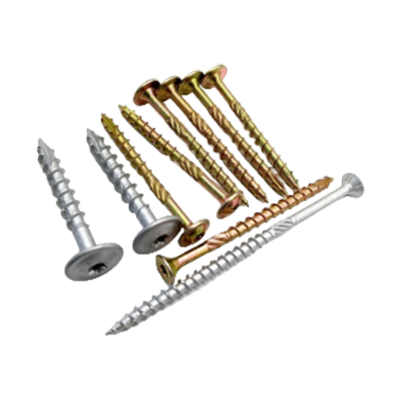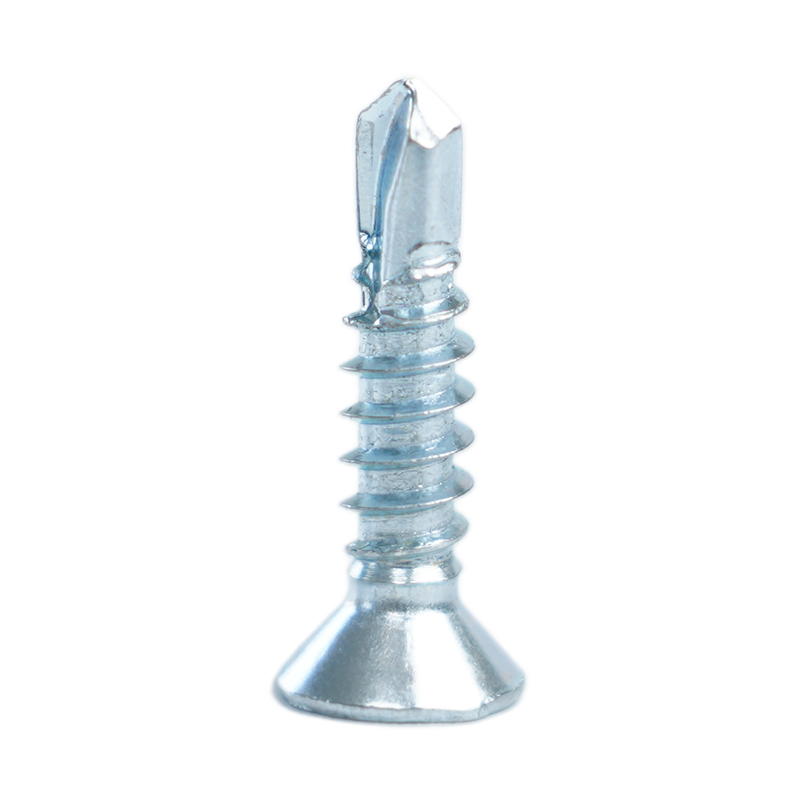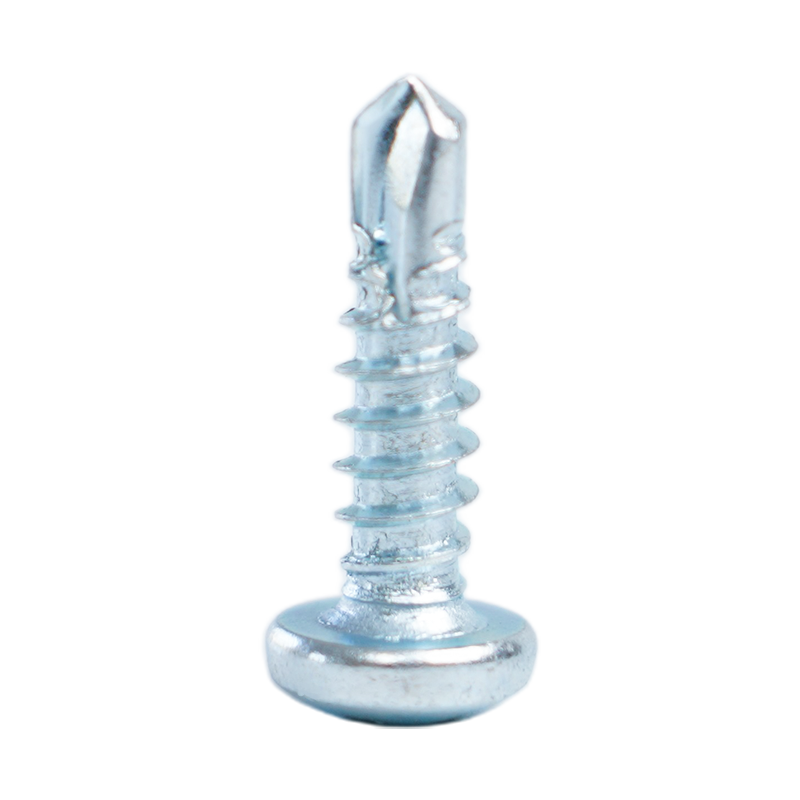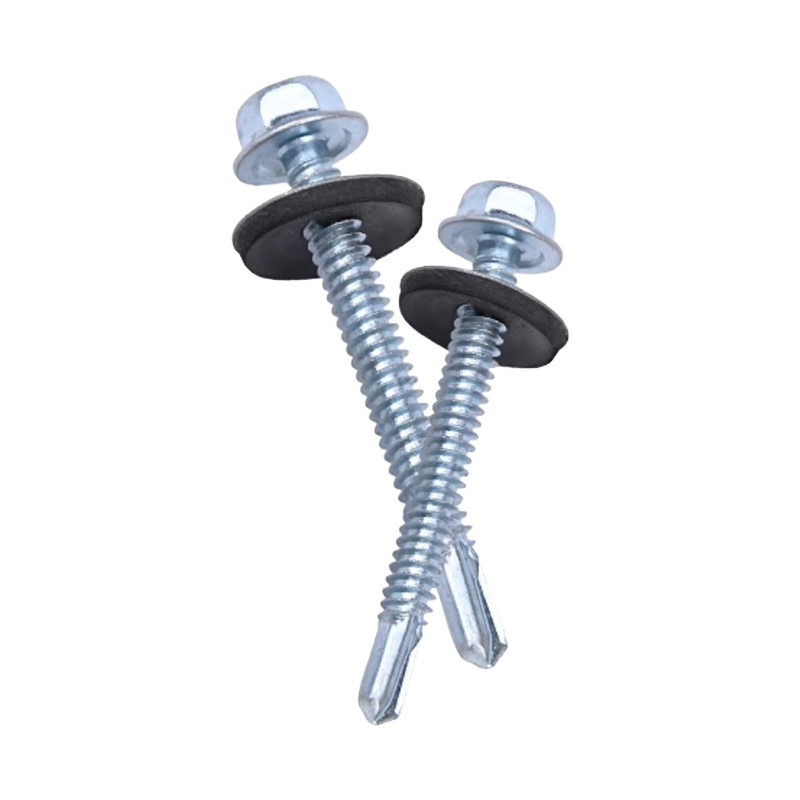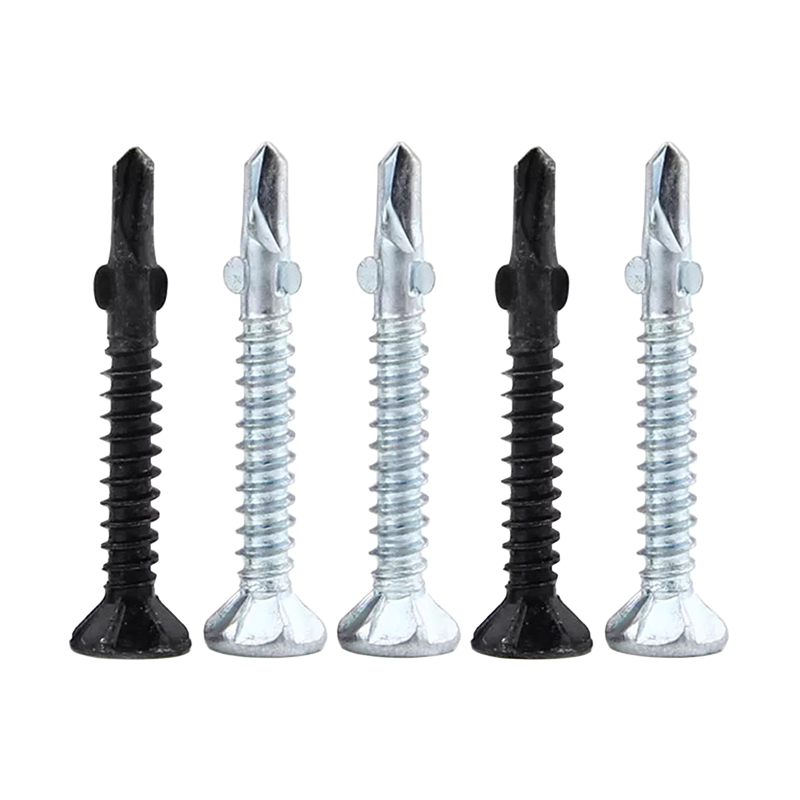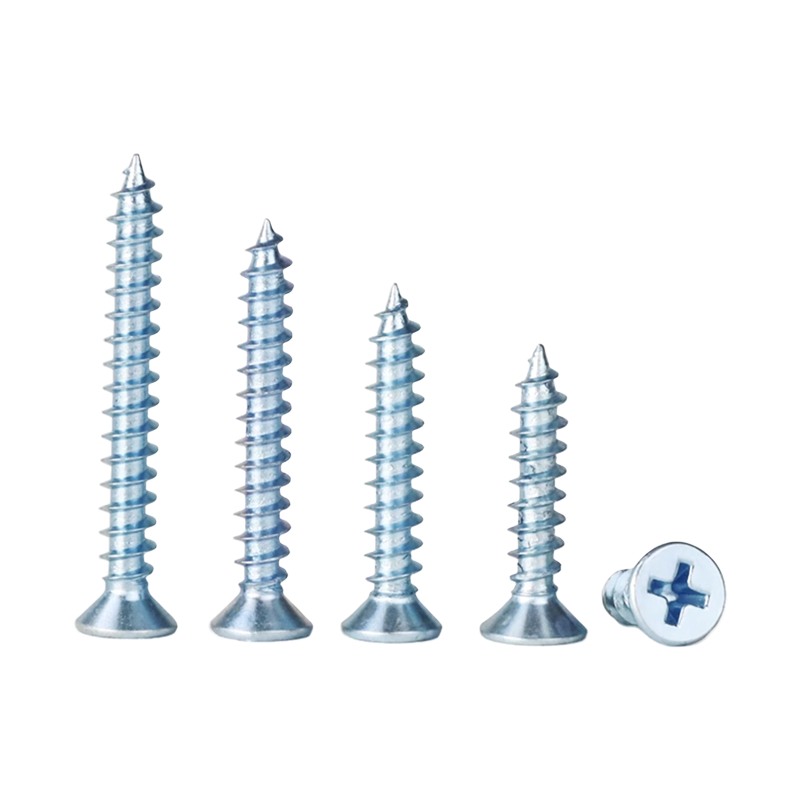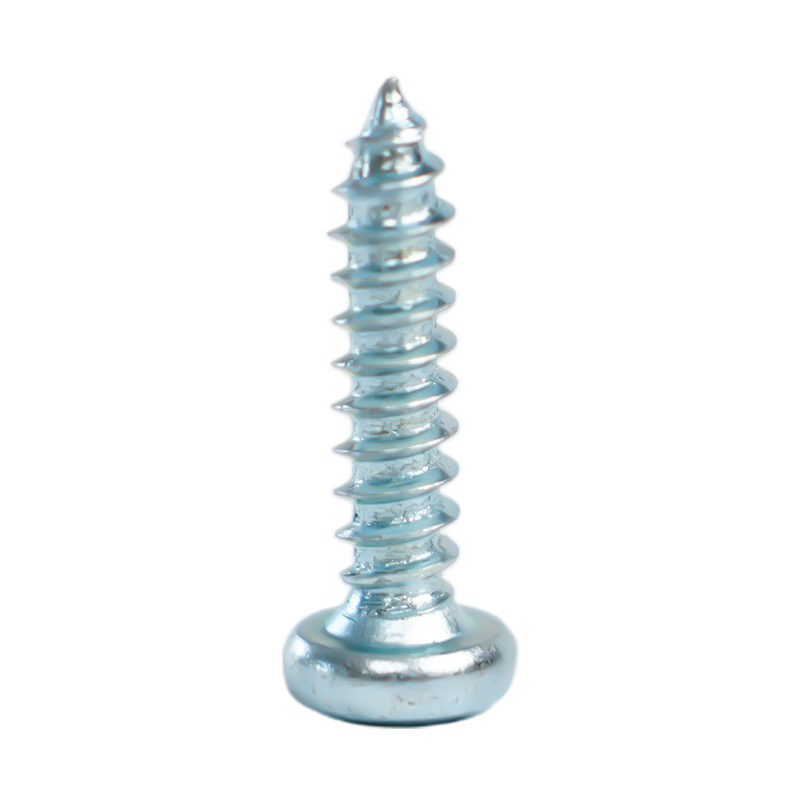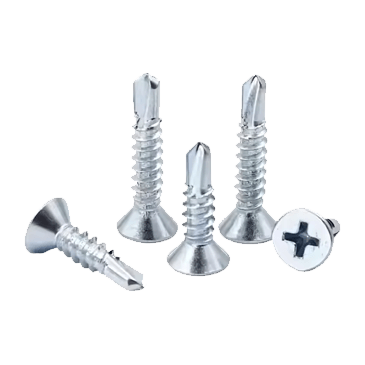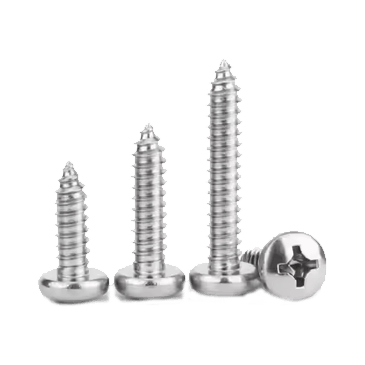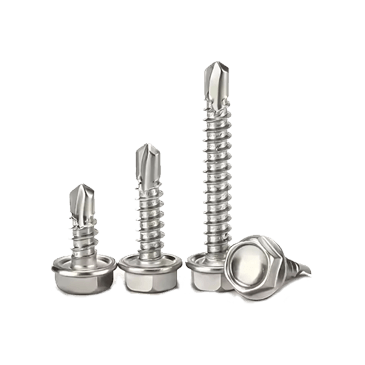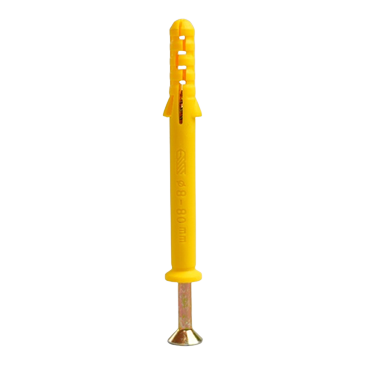Understanding Chipboard Screws and Their Unique Features
Chipboard screws are specifically engineered fasteners designed for use in chipboard, MDF (medium-density fibreboard), and other engineered wood products. Unlike general-purpose wood screws, chipboard screws have a finer thread pitch and a sharper point, enabling them to grip dense, compressed wood particles without causing splitting or surface damage.
1. Structure and Design Features of Chipboard Screws
- Thread Design – Chipboard screws often feature deep, closely spaced threads along most of their length. This maximizes grip in compact wood fibres and reduces the need for adhesives.
- Shank Type – A partially threaded shank can help pull materials tightly together, while a fully threaded shank offers better holding power for thinner boards.
- Tip Style – Many chipboard screws have a self-tapping or self-drilling tip, reducing the need for pilot holes.
- Head Types – Common head shapes include countersunk (for a flush surface) and pan head (for a slightly raised finish).
- Material & Coating – Steel is the most common base material, with coatings such as zinc, brass, or phosphate to improve corrosion resistance.
2. Typical Parameters of Chipboard Screws
| Parameter | Common Range / Options | Purpose & Effect |
| Length | 15 mm – 100 mm | Short screws for thin panels, longer for structural joints |
| Diameter (Gauge) | 3.0 mm – 6.0 mm | Thicker screws provide more holding strength |
| Thread Pitch | Fine (closer spacing) | Improves grip in dense chipboard fibres |
| Head Style | Countersunk, Pan, or Wafer Head | Affects surface finish and load distribution |
| Drive Type | Phillips, Pozidriv, Torx | Determines torque transfer efficiency |
| Coating | Zinc-plated, Yellow-passivated, Phosphate | Provides rust resistance and reduces friction |
3. How Chipboard Screws Differ from Standard Wood Screws
- Holding Power – Chipboard screws have finer threads that engage more fibres in engineered wood, whereas wood screws are coarser and better suited to softwoods.
- Reduced Splitting Risk – The sharp point and fine thread reduce splitting in dense boards without requiring oversized pilot holes.
- Installation Speed – Self-tapping chipboard screws can be driven directly, saving time compared to traditional screws that require pre-drilling.
4. Ideal Applications for Chipboard Screws
- Assembling flat-pack furniture
- Securing chipboard flooring to joists
- Installing cabinets and shelving
- Joining MDF or particleboard panels in construction and interior projects
Benefits of Using Chipboard Screws in Woodworking Projects
Chipboard screws are a preferred fastening solution in woodworking projects involving chipboard, MDF, particleboard, and other engineered wood materials. Their unique design offers multiple performance advantages over standard wood screws, especially in applications requiring strong holding power and precise alignment.
1. Strong Grip in Dense Materials
Chipboard screws feature fine, deep threads that create a secure mechanical bond within compressed wood fibres. This ensures that panels and boards remain tightly fastened over time, even under load or vibration.
Key advantage: Standard wood screws often have coarser threads, which may not engage sufficiently with the dense structure of chipboard.
| Feature | Chipboard Screws | Standard Wood Screws |
| Thread Pitch | Fine, closely spaced | Coarse, wider spacing |
| Grip Strength in MDF | High | Moderate to Low |
| Splitting Risk | Low | Moderate to High |
2. Reduced Splitting and Surface Damage
The sharp, precision-cut tips of chipboard screws allow them to penetrate without excessive force. This reduces the risk of splitting or chipping the board edges, which is especially important for pre-finished panels and visible joints.
3. Time-Saving Installation
Many chipboard screws are designed with self-tapping or self-drilling tips, allowing direct installation without a pilot hole in most situations. This reduces the number of steps and speeds up assembly in large-scale woodworking projects.
4. Enhanced Aesthetic Finish
When using countersunk chipboard screws, the screw head sits flush with the surface, creating a clean and professional appearance. This is ideal for furniture making and cabinetry, where visible fasteners can affect the overall look.
5. Versatility Across Multiple Wood Products
Chipboard screws work well not only in chipboard but also in MDF, laminated particleboard, and some plywood applications. This versatility allows woodworkers to standardize fasteners across various projects.
6. Cost-Effectiveness in Bulk Applications
Because chipboard screws are optimized for engineered wood, fewer are required per joint compared to less effective alternatives. This can reduce material waste and lower overall project costs, especially in furniture manufacturing.
The Complete Guide to Chipboard Screws: Selection, Installation and Applications
Chipboard screws are specialized fasteners that deliver superior holding strength in engineered wood products. Selecting, installing, and applying them correctly can maximize performance and ensure the longevity of your woodworking projects.
1. Selection Criteria for Chipboard Screws
- Material and Coating – Choose zinc-plated or yellow-passivated for indoor projects, and corrosion-resistant coatings for outdoor applications.
- Length – As a rule, the screw should be 2.5–3 times the thickness of the top board for optimal grip.
- Head Type – Countersunk heads for flush finishes; pan or wafer heads for surface mounting.
- Thread Type – Fine threads for dense boards, coarse for softer materials.
2. Installation Best Practices
- Use the correct driver bit (e.g., Torx, Phillips, Pozidriv) to avoid cam-out.
- For hard materials, consider drilling a small pilot hole to prevent stress cracking.
- Drive screws at a steady speed to avoid stripping the material.
- When using countersunk screws, pre-countersink the hole for a smoother finish.
3. Common Applications
- Furniture assembly
- Cabinet making
- Flooring installation
- Panel fixing in construction
4. Parameter Reference Table
| Length | 15–100 mm | Short lengths for thin panels, long for deep joints |
| Diameter | 3–6 mm | Determines holding capacity |
| Coating | Zinc, Yellow-passivated, Phosphate | Corrosion resistance and lubrication |
| Drive Type | Phillips, Torx, Pozidriv | Torque transmission efficiency |
How to Choose the Right Chipboard Screws for Specific Materials
Choosing the correct chipboard screws for specific materials ensures maximum fastening efficiency and prevents material damage. Factors such as screw length, thread type, and coating all influence performance. Wuxi Sharp Metal Products Co., Ltd. produces a variety of screws suitable for different woodworking and construction applications, ensuring consistent quality and performance.
1. Chipboard and Particleboard
- Length – 2.5–3 times the thickness of the top layer.
- Thread – Fine, deep threads for maximum grip.
- Coating – Zinc or yellow-passivated for indoor furniture and panel applications.
2. MDF (Medium-Density Fibreboard)
- Fine threads to avoid splitting.
- Self-tapping tips to reduce the need for pilot holes.
- Use countersunk heads for a smooth surface finish.
3. Plywood
- Coarser threads can be used if plywood layers are thick and adhesive-bonded.
- Length should penetrate at least half the thickness of the bottom layer.
- For outdoor use, select corrosion-resistant coatings.
4. Parameter Selection Table
| Material | Recommended Thread | Recommended Coating | Typical Length |
| Chipboard | Fine, deep | Zinc / Yellow-passivated | 25–50 mm |
| MDF | Fine | Zinc / Phosphate | 30–60 mm |
| Plywood | Medium to coarse | Corrosion-resistant | 35–75 mm |
Wuxi Sharp Metal Products Co., Ltd., established in 1993, operates from a 6000-square-meter facility in Yanqiao Industrial Park, Huishan District, Wuxi City, Jiangsu Province. The company produces carbon steel screws, stainless steel self-tapping screws, wood screws, drywall screws, fiber screws, cement screws, and trades door and window accessories. With over 100 machines and inventory exceeding 800 tons, their annual output is about 2000 tons. Their large-scale production and warehousing capabilities ensure stable supply, and their commitment to "quality first, reputation first" guarantees reliable products for domestic and international customers.

 +86-15052135118
+86-15052135118 

 Español
Español
 Get In Touch
Get In Touch


